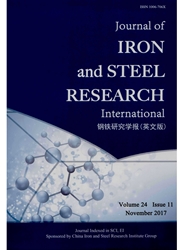

 中文摘要:
中文摘要:
Numerical simulation on the flow fields near the dimpled and the smooth revolution bodies are performed and compared by using SST k-ω turbulence model, to explain the reasons of friction and base drag reductions on the bionic dimpled surface and the control behaviors of dimpled surface to boundary layer near wall of the revolution body. The simulation results show that the dimpled surface reduces the skin friction drag through reducing the velocity gradient and turbulent intensity, and reduces the base drag through weakening the pumping action on the flow behind the revolution body caused by the external flow; the low speed rotating vortexes in the dimples segregate the external flow and the revolution body; and the low speed rotating vortexes forming in the bottom of dimples can produce negative skin friction.
 英文摘要:
英文摘要:
Numerical simulation on the flow fields near the dimpled and the smooth revolution bodies are performed and compared by using SST k-ω turbulence model, to explain the reasons of friction and base drag reductions on the bionic dimpled surface and the control behaviors of dimpled surface to boundary layer near wall of the revolution body. The simulation results show that the dimpled surface reduces the skin friction drag through reducing the velocity gradient and turbulent intensity, and reduces the base drag through weakening the pumping action on the flow behind the revolution body caused by the external flow; the low speed rotating vortexes in the dimples segregate the external flow and the revolution body; and the low speed rotating vortexes forming in the bottom of dimples can produce negative skin friction.
 同期刊论文项目
同期刊论文项目
 同项目期刊论文
同项目期刊论文
 Biomimetic Construction of Category Mental Imagery Based on Recognition Mechanism of Visual Cortex o
Biomimetic Construction of Category Mental Imagery Based on Recognition Mechanism of Visual Cortex o Study on preheating and annealing treatments to biomimetic non-smooth cast iron sample with high the
Study on preheating and annealing treatments to biomimetic non-smooth cast iron sample with high the Optimization of Laser Processing Parameters and Their Effecton Penetration Depth and Surface Roughne
Optimization of Laser Processing Parameters and Their Effecton Penetration Depth and Surface Roughne Macro-/Micro-Structures of elytra, mechanical properties of the biomaterial and the coupling strengt
Macro-/Micro-Structures of elytra, mechanical properties of the biomaterial and the coupling strengt Friction and wear property of duplex MAO/CrN coatings sliding against Si3N4 ceramic balls in air, wa
Friction and wear property of duplex MAO/CrN coatings sliding against Si3N4 ceramic balls in air, wa Study on adhesion resistance behavior of sample with striated non-smooth surface by laser processing
Study on adhesion resistance behavior of sample with striated non-smooth surface by laser processing Contact mechanics of pad of grasshopper (Insecta: ORTHOPTERA) by finite element methods. Chinese Sci
Contact mechanics of pad of grasshopper (Insecta: ORTHOPTERA) by finite element methods. Chinese Sci Biomimetic coupling effect of non-smooth mechanical property and microstructural features on thermal
Biomimetic coupling effect of non-smooth mechanical property and microstructural features on thermal Effects of graphite shape on thermal fatigue resistance of cast iron with biomimetic non-smooth surf
Effects of graphite shape on thermal fatigue resistance of cast iron with biomimetic non-smooth surf Effect of medium on friction and wear properties of compacted graphite cast iron processed by biomim
Effect of medium on friction and wear properties of compacted graphite cast iron processed by biomim Effects of pre-placed coating thickness on thermal fatigue resistance of cast iron with biomimetic n
Effects of pre-placed coating thickness on thermal fatigue resistance of cast iron with biomimetic n Biological coupling anti-wear properties of three typical molluscan shells—scapharca subcrenata, rap
Biological coupling anti-wear properties of three typical molluscan shells—scapharca subcrenata, rap 期刊信息
期刊信息
